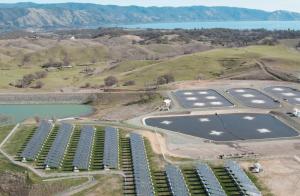The future looks bright for distributed PV.
Steven Andersen is a freelance writer based in New York. Email him at andersenwriting@gmail.com.
Moore’s Law is a seductive but slippery concept. Strictly speaking, it refers to the 1965 observation by Intel founder Gordon Moore that the number of transistors possible in an integrated circuit doubles about every two years. But much to Moore’s chagrin, the term often is misused. “If [Al] Gore invented the Internet,” he once joked, “I invented the exponential.”

Moore’s law is casually, and often erroneously, applied throughout the digital technology sector to any exponential increase (speed, density) or reduction (cost, size) over time. Recently, the notion has ventured even farther afield and is increasingly mentioned in relation to the cost and performance of photovoltaics (PV).
“The PV buzz isn’t really analogous to Moore’s Law, which is just an engineering statement,” says Bill Sweet, editor of Spectrum, the flagship magazine of IEEE—the Institute of Electrical and Electronics Engineers. “This PV law is about costs, and of course costs depend on a lot of things. However, when you say PV Moore’s Law, you do get a lot of attention.”
On the surface the argument is simple. Global PV production grows by about 50 percent a year, so capacity doubles about every 18 months. According to the PV version of Moore’s Law, every time capacity doubles, the cost per watt comes down 20 percent. Project those gains over time, and somewhere around 2015, PV will achieve cost parity with traditional central generation.
